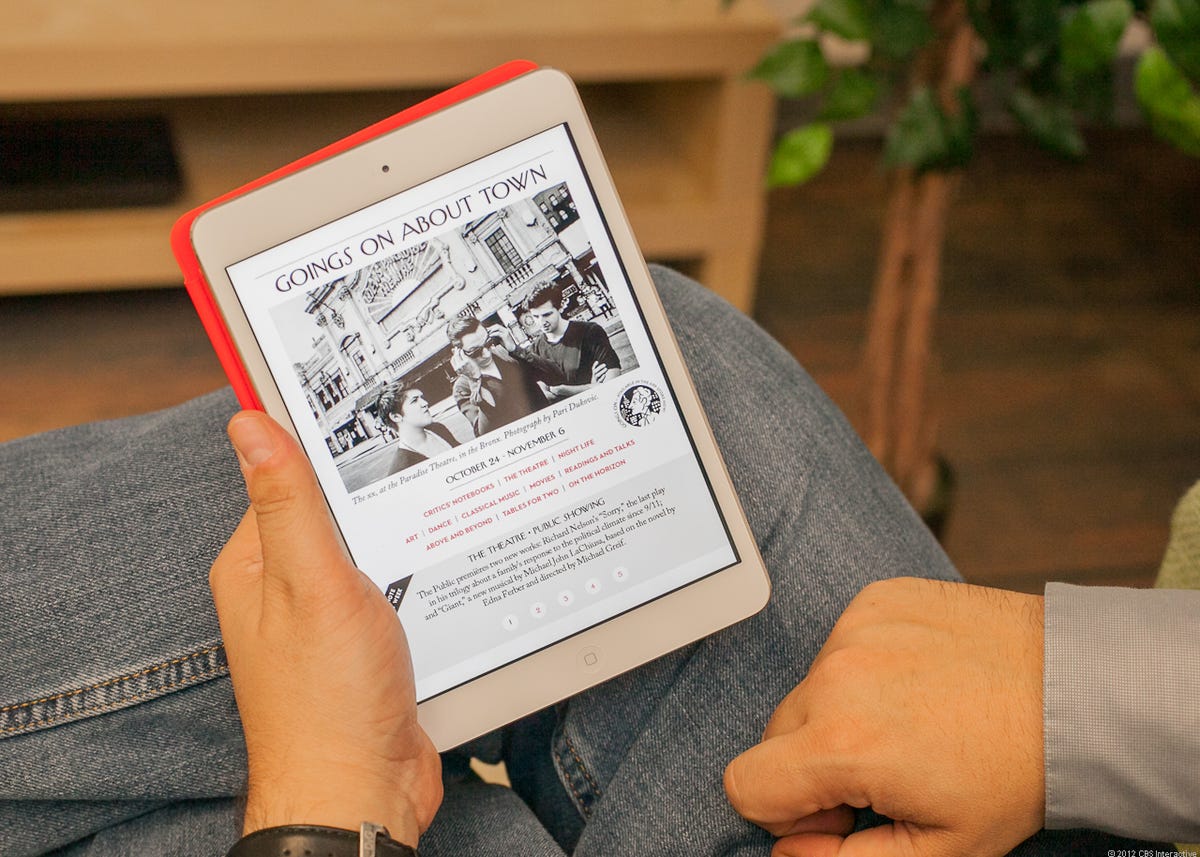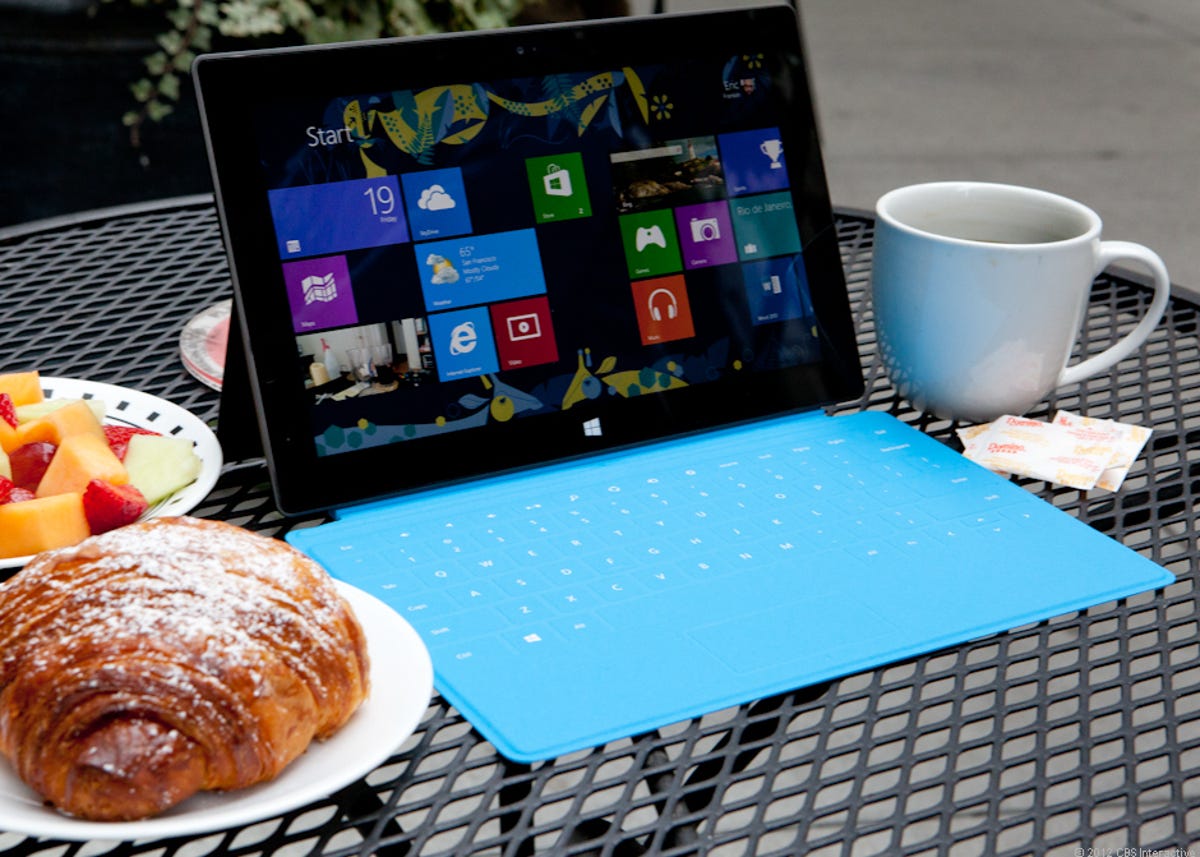Now that the iPad line has split into two families, the Mini and the Retina, it might make you wonder where the iPad, as a product, is heading. I’ve wondered it, too, even going back to the days before the Mini. The third-gen Retina Display iPad was such a complete product that it made me curious: where could iPads go next?
As the days go on since reviewing the iPad Mini, I look back and forth between both the “large iPad” and the Mini. I carry both around (I don’t normally travel with two iPads — they’re review samples, I own a third-gen). I use them around my home and outside. They’re awfully similar in experience, different in size and speed. But I think there’s something else going on. I think iPads, to some degree, are entering a transition.


CNET
The iPad Mini = the evolution of the iPad as we know it
The 9.7-inch “large iPad” has looked pretty similar over its first four generations. Even from iPad to iPad 2, the biggest design leap, things looked pretty much the same. The iPad Mini is the single biggest design shift: thinned bezels, a more iPhone/iPod-like design, and a far more portable feel.
If the Mini is the shrunken iPad 2, then next year’s Mini could be the new iPad 3, or 4. Next year, I expect it will get a few extra features (Retina Display) and will become a truly perfect device for e-reading, media viewing, gaming, and apps. It’s the most affordable and the most portable iPad, thus it’ll be the one many people will flock to.
So, where does that leave the larger iPad?


Sarah Tew/CNET
Large iPad: Vanguard of new tech, MacBook Air apparent
I currently recommend the fourth-gen iPad over the Mini as the best-in-class iPad for its performance and its wonderful display, but the gap between it and the Mini is smaller than you’d think. The iPod and iPod Mini had a difference, and it was storage capacity. Currently, the large and small iPads are different mainly in processor and screen quality. Those are important aspects, but ones that not every user will care about or appreciate (in the laptop landscape, it’s like the difference between ultrabooks and Netbooks).
We can pick obvious ideas for the next iPad, like a quad-core processor and increased storage. Beyond that, I’m not sure what comes next…except for the iPad to make another leap into being a laptop-alternative mobile computer.
What about using the large iPad as the place where iOS and Mac OS X meet? I’ve wondered about this junction for years, and while iOS and OS X have gotten closer in many ways, I think the time will come where the iPad can take another big step.
Let’s face it: the iPad’s already made many of those steps, spiritually. I use a keyboard with mine regularly. Many people blog from them or use them as redefined PCs.


Josh Miller/CNET
The Surface and Windows 8 are paving the way for fusion and convertible devices. While some of these design concepts may click with users, many others will undoubtedly fail. Maybe that paves the way for Apple to develop its own hybrid in a few years. Add a keyboard and trackpad, and Mac cross-compatibility to the iPad, and it could be a tweener device.
Microsoft’s Surface and Windows 8 tablets show the way for a true hybrid. The Surface ads, as my wife reminded me, are compelling. The attaching of the keyboard to use anywhere, the laptop-meets-tablet sexiness.
The iPad already comes close to being a true computer replacement, but it’s not quite there yet. The iPad has keyboards (I’ve reviewed most of them), but they’re generally just typing accessories. They lack trackpads. You can’t control the iPad like you can a regular laptop.
Frankly, Apple doesn’t need to be as aggressive as Microsoft. The iPad is a huge success. The App Store dominates. iOS is a massive platform. For all these reasons, Apple is taking a road of continuing current success, building more similar devices. The time for change simply hasn’t arrived.
Will it ever happen with Apple? I don’t think that time comes next year, or even the year after that. There will be a time, though, when iOS and OS X need to combine. Windows 8 is a harbinger of the future. Microsoft doesn’t have an app platform, hence Windows 8. Apple needs to simply bring both of its platforms and operating systems together, because iOS is becoming, in many ways, much larger than a mobile platform. It’s becoming Apple’s primary software landscape.
Mac OS X is already up to 10.8. What comes when we hit 11? I’ve always sensed it would be the moment where both of Apple’s operating systems fused into one iOS-meets-OS X universe.
Desktop iMacs are getting thinner. So are MacBooks. Both feel, in terms of design, closer to the iPad’s spirit. It’s not a big leap to imagine grafting a keyboard onto an iPad. It could be the ultimate touch-screen Mac. Maybe it becomes an iPad when undocked, a MacBook Air when docked. Maybe it can pop onto a desk and become a mini-iMac, shades of the old PowerBook Duo.
I don’t know if this is what Apple envisions, but I can’t imagine the iPad continuing on a separate path from Macs forever. Either OS X eventually gives way, or both environments evolve. On a larger iPad, it seems like these worlds could finally meet once processors take another big leap forward and cloud services continue to improve.
If and when that happens, the large iPad is poised to be lynchpin to a Surface-like device for Apple. First, Apple needs to jump back into the keyboard-accessory landscape. Second, iOS needs to support a more Mac-like environment. There are likely to be other surprises, too.
For the immediate future, the iPad looks like it’s very happy staying the course with two lines of attractive products. After that, I hope the iPad and iOS become as aggressively forward-looking as I’d like them to be. Right now, the future experimentation belongs to Microsoft. The stability belongs to Apple.


Now playing:
Watch this:
Unboxing the iPad Mini
4:27



